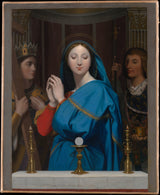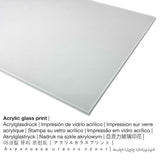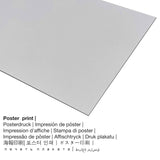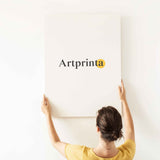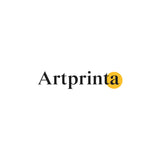Jean Auguste Dominique Ingres, 1852 - The Virgin Adoring the host - ọmarịcha nka.
Ụtụ gụnyere. Mbupu gbakọrọ na ndenye ọpụpụ.
Ngwaahịa nka
This modern art painting was created by Jean Auguste Dominique Ingres in 1852. Emere izizi ya na nha: 15 7/8 x 12 7/8 na (40,3 x 32,7 cm). Mmanụ na kwaaji was used by the European artist as the medium of the work of art. What is more, this work of art is included in the art collection of Museumlọ ihe ngosi nka nke Obodo in New York City, New York, Njikota Obodo Amerika. Site n'ikike nke - The Metropolitan Museum of Art, New York, Gift of Lila and Herman Shickman, 2005 (ikikere: ngalaba ọha). Also, the artwork has the following creditline: Gift of Lila and Herman Shickman, 2005. What is more, the alignment is in portrait format with a side ratio of 1: 1.2, nke pụtara na ogologo bụ 20% mkpụmkpụ karịa obosara.
Kedu ihe ga-amasị gị?
The product dropdown menu ofers you the opportunity to pick your individual size and material. You can choose your your favorite size and material among the following options:
- Akwụkwọ mmado ebipụtara (ihe kwaaji): The poster print is a printed cotton canvas paper with a slight structure on the surface. A poster print is best qualified for placing the fine art print with a custom-made frame. Please note, that depending on the absolute size of the poster we add a white margin of something between 2 - 6cm around the print motif, which facilitates the framing with your custom frame.
- Aluminom dibond (ọkpụkpụ ọla): An Aluminium Dibond print is a print with a true depth effect. A non-reflective surface structure creates a fashionable look. The bright sections of the original artpiece shimmer with a silky gloss, however without any glare. The colors of the print are luminous in the highest definition, the fine details appear clear and crisp, and you can feel a matte appearance of the product. This direct print on Aluminum Dibond is the most popular entry-level product and is a truly stylish way to showcase fine art reproductions, as it puts all of the viewer’s attention on the replica of the artwork.
- Ihe odide acrylic glass: The print on acrylic glass, which is sometimes described as a print on plexiglass, will change your favorite original work of art into stunning décor. Your own version of the work of art is being manufactured with the help of modern UV printing technology. It makes vibrant and stunning colors. With an acrylic glass fine art print contrasts plus smaller details will be more visible with the help of the delicate gradation in the picture. The acrylic glass protects your chosen art replica against light and external influences for many years.
- Mbipụta kanvas: The printed canvas material applied on a wood stretcher frame. A canvas creates the unique look of three-dimensionality. A printed canvas produces a cosy and comfy atmosphere. Canvas prints are relatively low in weight, meaning that it is easy and straightforward to hang up your Canvas print without additional wall-mounts. A canvas print is suited for any type of wall.
Nkwupụta iwu: We strive to depict our art products as accurate as possible and to display them visually in our shop. Although, the tone of the print materials, as well as the imprint can vary to a certain extent from the image on the device's monitor. Depending on the screen settings and the quality of the surface, not all color pigments are printed as realisitcally as the digital version shown here. Given that the fine art prints are processed and printed by hand, there might as well be slight discrepancies in the motif's exact position and the size.
Ozi ihe ahaziri ahazi
| Nkewa ngwaahịa: | ọmarịcha nka |
| Usoro mmeputakwa: | dijitalụ mmeputakwa |
| Usoro nhazi: | UV kpọmkwem obibi |
| Ihe ngosi: | emere na Germany |
| Ụdị ngwaahịa: | mmepụta ihe na-achọ |
| Ihe eji eme atụmatụ: | nchịkọta nka (mmeputakwa), mma mgbidi |
| Nhazi: | usoro eserese |
| Njikwa oyiyi: | 1: 1.2 |
| Nkọwa nha onyonyo: | ogologo bụ 20% mkpụmkpụ karịa obosara |
| Nhọrọ akwa: | Mbipụta iko acrylic (nke nwere ezigbo mkpuchi iko), mbipụta kanvas, mbipụta ọla (aluminium dibond), mbipụta akwụkwọ mmado (akwụkwọ kwaaji) |
| Mbipụta kanvas (akwa akwa na etiti ihe ndọtị): | 50x60cm - 20x24", 100x120cm - 39x47", 150x180cm - 59x71" |
| Mpempe iko acrylic (nwere ezigbo mkpuchi iko) nha dị iche iche: | 50x60cm - 20x24", 100x120cm - 39x47", 150x180cm - 59x71" |
| Mbipụta akwụkwọ mmado (akwụkwọ kwaaji): | 50x60cm - 20x24", 100x120cm - 39x47" |
| Mpempe akwụkwọ Dibony (ihe alumnium) nha: | 50x60cm - 20x24", 100x120cm - 39x47" |
| Nhazi nke nka nka: | na-enweghị etiti |
Ọrụ tebụl nka
| Aha nke ọrụ nka: | "The Virgin Adoring the Host" |
| Nhazi nke ihe nka: | sere |
| Otu izugbe: | nkà nke oge a |
| Narị afọ nka: | 19th narị afọ |
| Emepụtara n'afọ: | 1852 |
| Afọ nka: | ihe karịrị 160 afọ |
| Ọkara nke ihe osise izizi: | mmanụ na kwaaji |
| Akụkụ nke ọrụ nka mbụ: | 15 7/8 x 12 7/8 na (40,3 x 32,7 cm) |
| Ụlọ ihe ngosi nka / mkpokọta: | Museumlọ ihe ngosi nka nke Obodo |
| Ebe ngosi nka: | New York City, New York, Njikota Obodo Amerika |
| URL webụ: | Museumlọ ihe ngosi nka nke Obodo |
| License: | ngalaba ọha |
| Site n'aka: | The Metropolitan Museum of Art, New York, Gift of Lila and Herman Shickman, 2005 |
| Ebe kredit nke ọrụ nka: | Gift of Lila and Herman Shickman, 2005 |
Nkọwa onye nka
| Ihe nkiri: | Jean Auguste Dominique Ingres |
| okike nke onye nka: | nwoke |
| Obodo onye nka: | French |
| Ọrụ: | onye na-ese ihe |
| Country: | France |
| nhazi ọkwa: | omenkà nke oge a |
| Afọ ọnwụ: | 87 afọ |
| A mụrụ: | 1780 |
| Obodo ọmụmụ: | Montauban |
| Nwụrụ n'afọ: | 1867 |
| Nwụrụ na (ebe): | Paris |
Nwebiisinka © - Artprinta.com (Artprinta)
Ozi nka sitere na webụsaịtị Metropolitan Museum of Art (© - nke Ụlọ ihe ngosi nka nke Obodo ukwu - Museumlọ ihe ngosi nka nke Obodo)
This small, jewel-like devotional painting was made as a gift for Ingres’s friend Louise Marcotte, who introduced the artist to Delphine Ramel, whom he married in 1852. The Raphaelesque composition is based on one Ingres first painted in 1841 for the future czar Alexander II, which includes the two patron saints of Russia, Alexander Nevsky and Nicholas (Pushkin Museum of Fine Arts, Moscow). For this version, Ingres replaced the Russian saints with two French ones. He would go on to paint four more variants, as well as, in 1855, a watercolor for Madame Ingres herself (Fogg Museum, Cambridge, Mass.).

